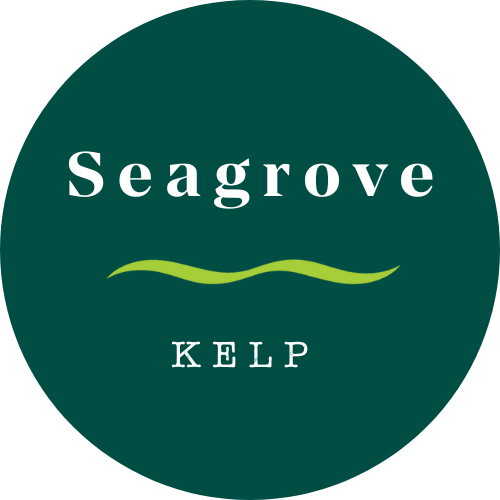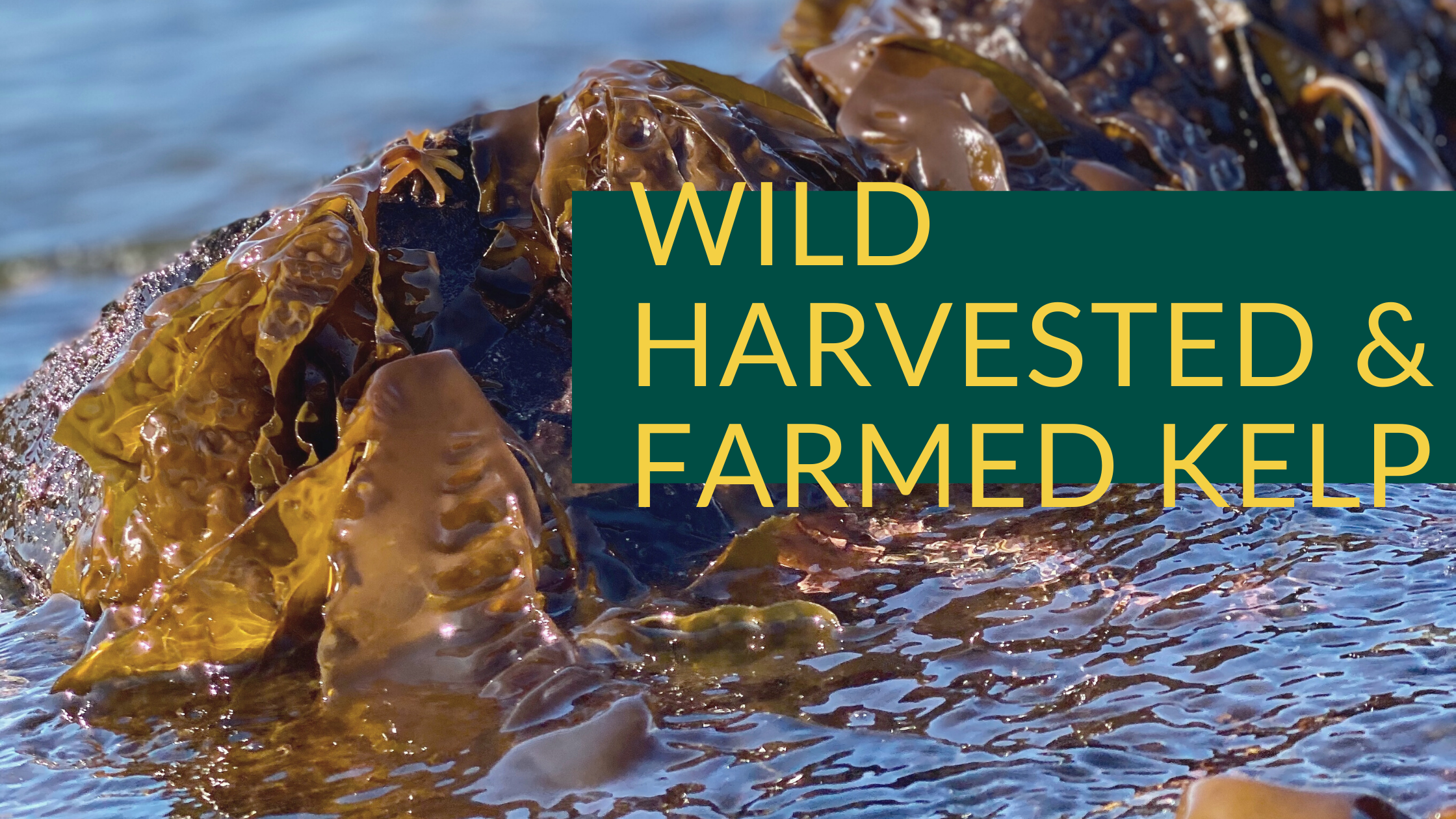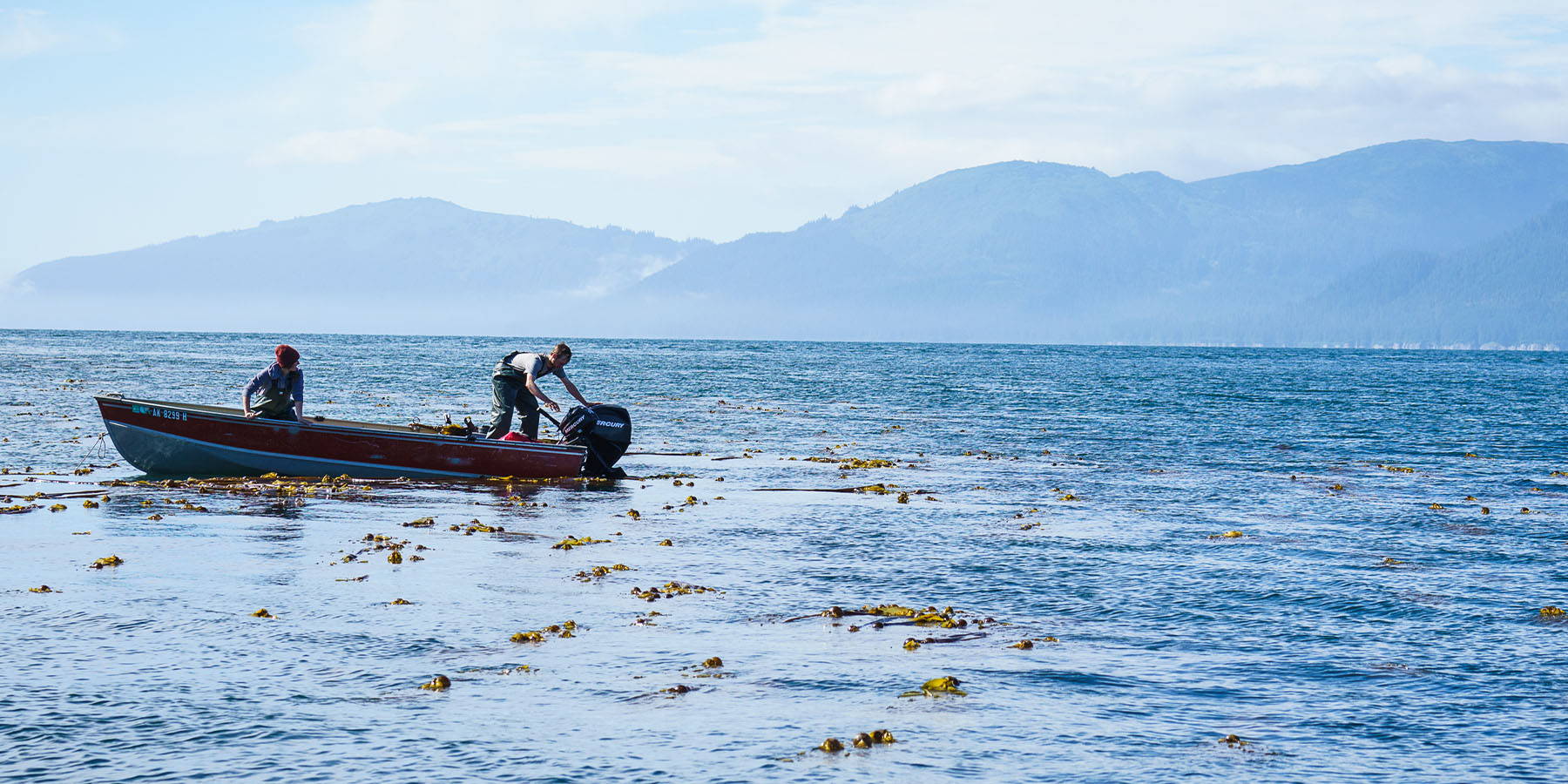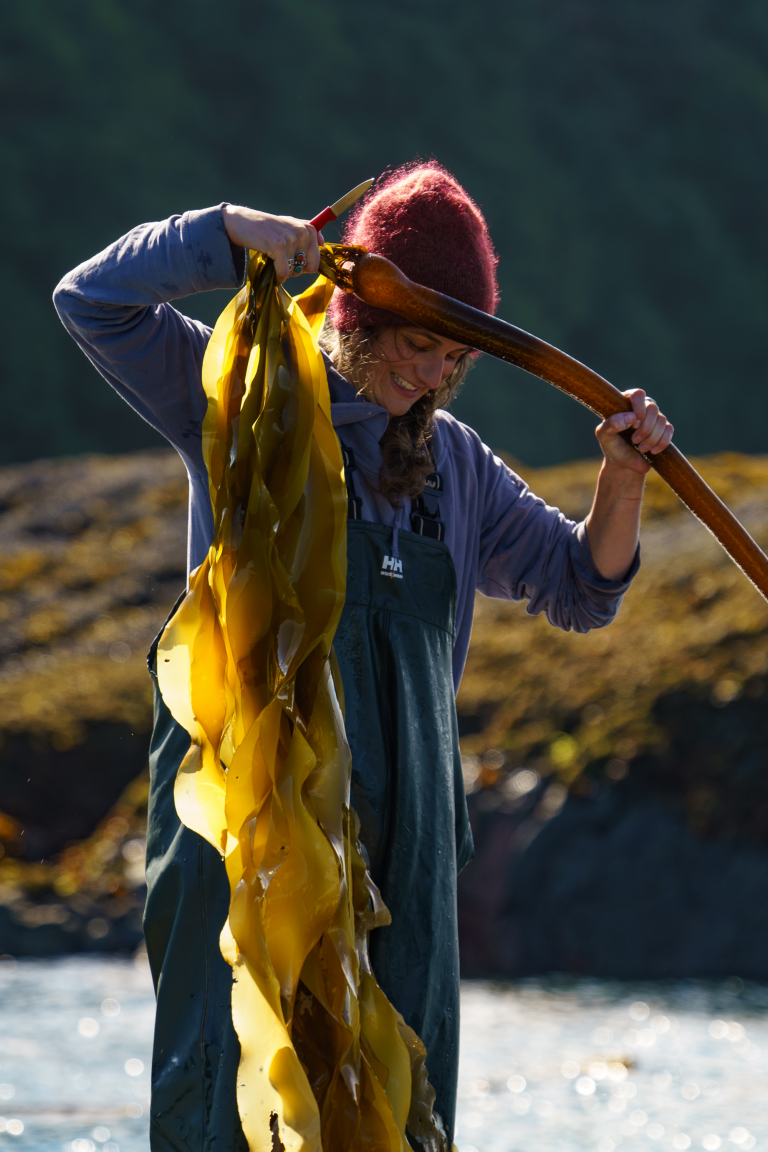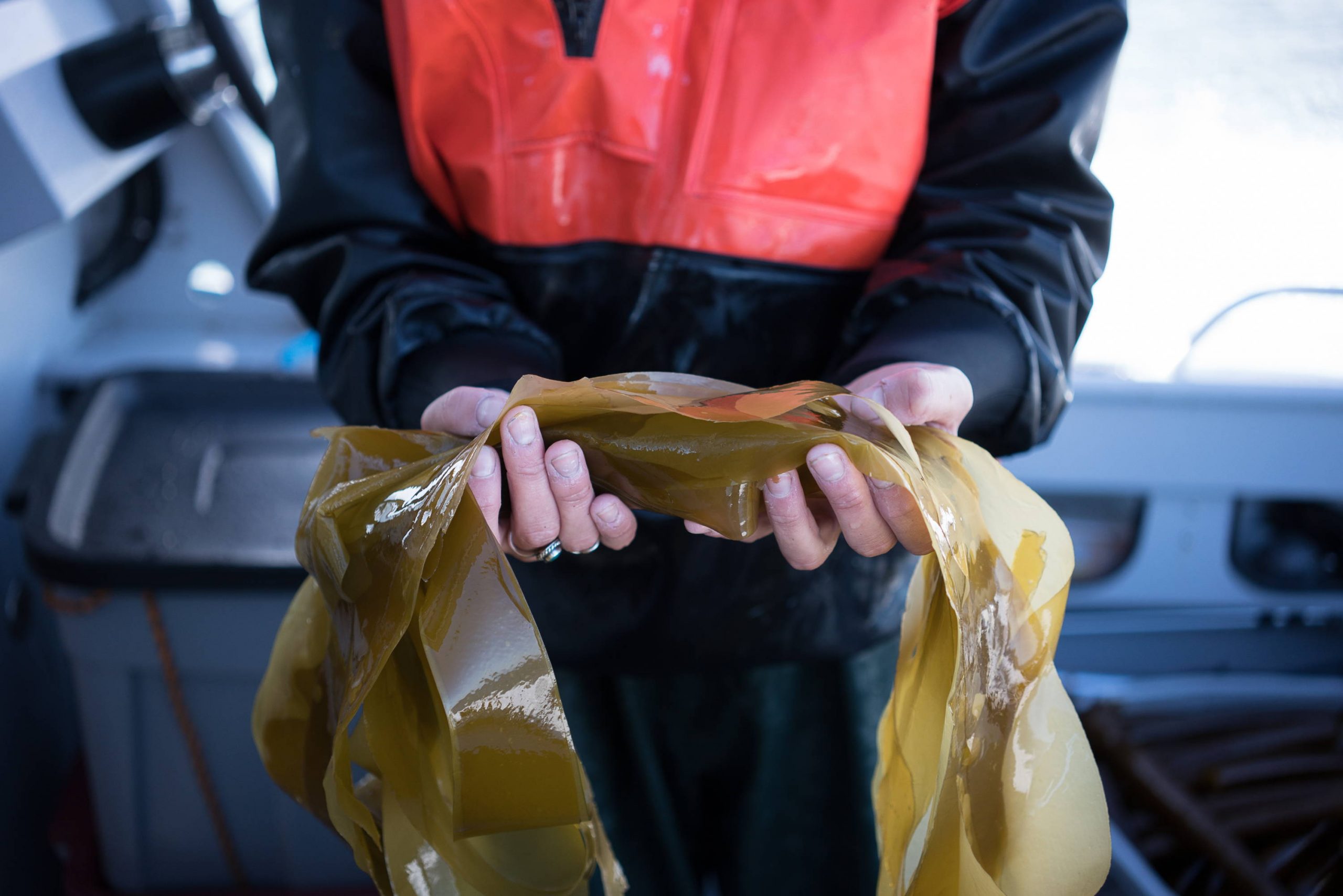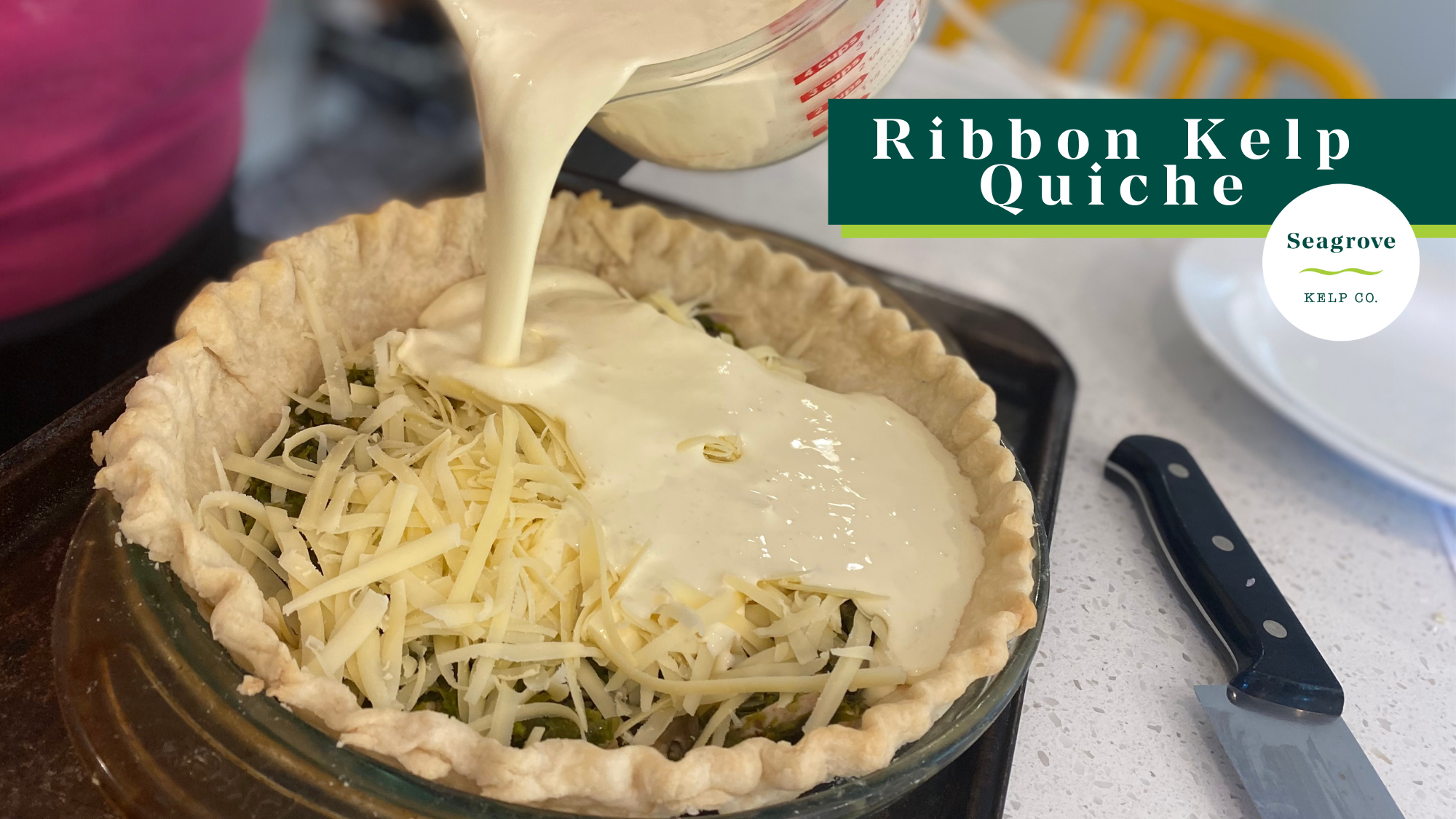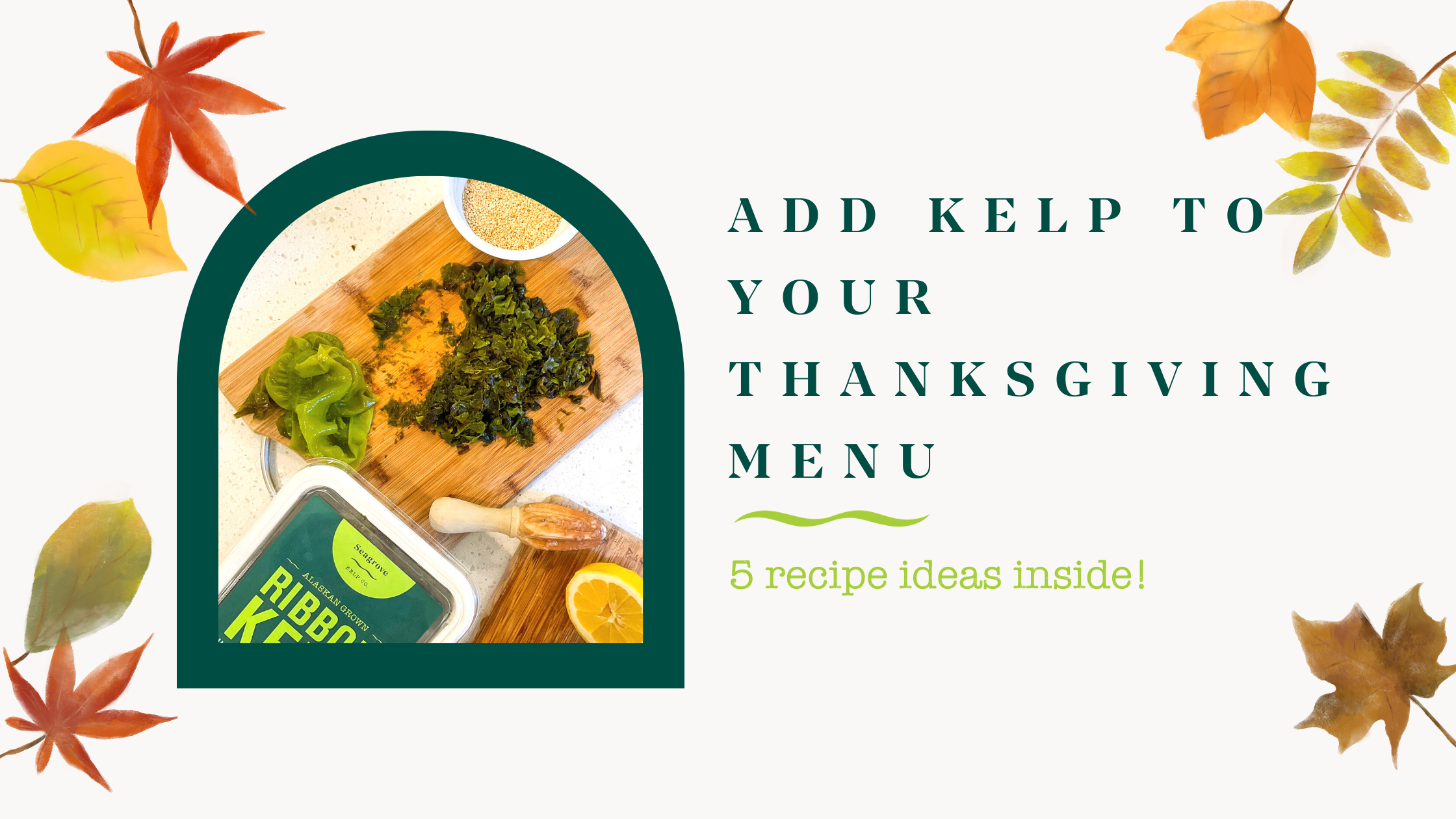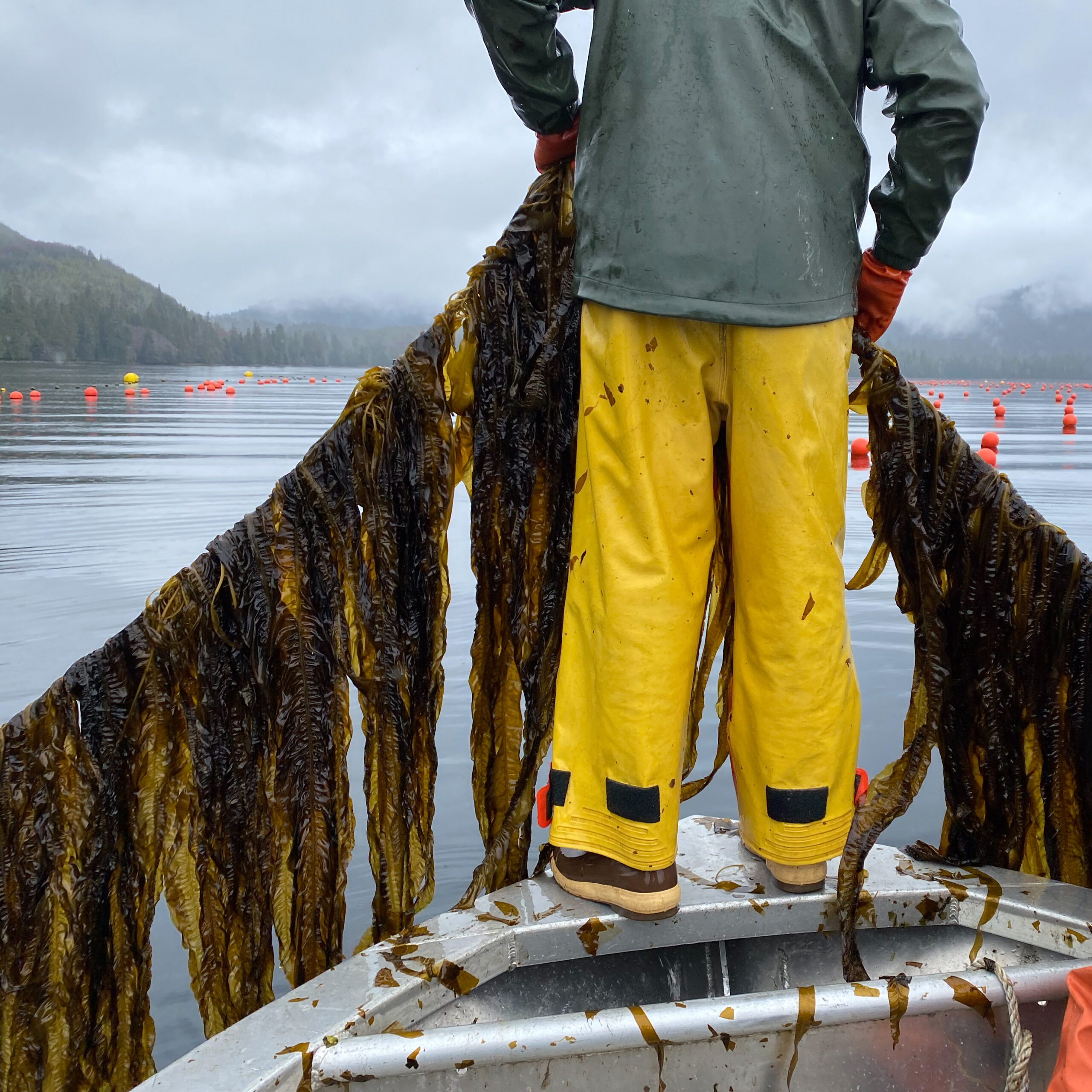A question we receive at Seagrove Kelp Co. is wondering what the differences are between wild-harvested kelp and the farmed kelp that we grow from seed to harvest at our farm in Doyle Bay, Alaska.
Truthfully, not a lot. But the full answer is more complex than that. And while we spend our days immersed in the world of farmed kelp I reached out to our friends at Barnacle Foods in Juneau, AK to help me out with the other side of things.
One of the more obvious differences between farmed kelp and wild kelp is how it is grown and harvested.
Wild kelp grows naturally in its native environment and when it is ready to be plucked from the sea in the late summer foragers, such as the Barnacle team, head out to the kelp beds (if the weather and tides are cooperating) and harvest the kelp by hand. They do this by grabbing the kelp that is floating on the surface and cutting it free. Once pulled aboard they divide and sort the kelp by the fronds and stipe and then keep them cool in insulated fish totes.
There is more work that goes into wild-harvesting before heading out in the skiff, however. Foragers work closely with marine biologists to come up with a general plan on where and when to harvest to make sure they don’t eliminate an area of kelp growth. They know from research and experience just how much kelp can be taken from a bed to continue the growth of that individual forest. Only about 5% of a kelp bed can be harvested to allow for that annual growth to return and all harvested kelp is well documented to ensure the survival of the wild kelp.
In contrast, a kelp farm knows from the onset how much kelp they expect to produce. At Seagrove Kelp, the first harvest of our kelps’ lives starts when we take sori (reproductive tissue) from wild kelp populations within 50 kilometers of where the kelp will grow at the farm. This practice helps keep the native plants in their optimized environment as well as maintains genetic diversity among the local kelp beds.
Once the farmed kelp is ready for the farm they are transferred from their home in the lab to the grow-out site and the seeding process begins. The kelp is maintained and carefully watched over during their time on the farm and come late spring in Alaska the team will harvest the kelp using commercial fishing boats, equipment, and fishermen. Similar to the wild-harvested kelp, the farmed kelp is transferred in insulated fish totes to begin its new life as a sustainable ingredient in your kitchen.
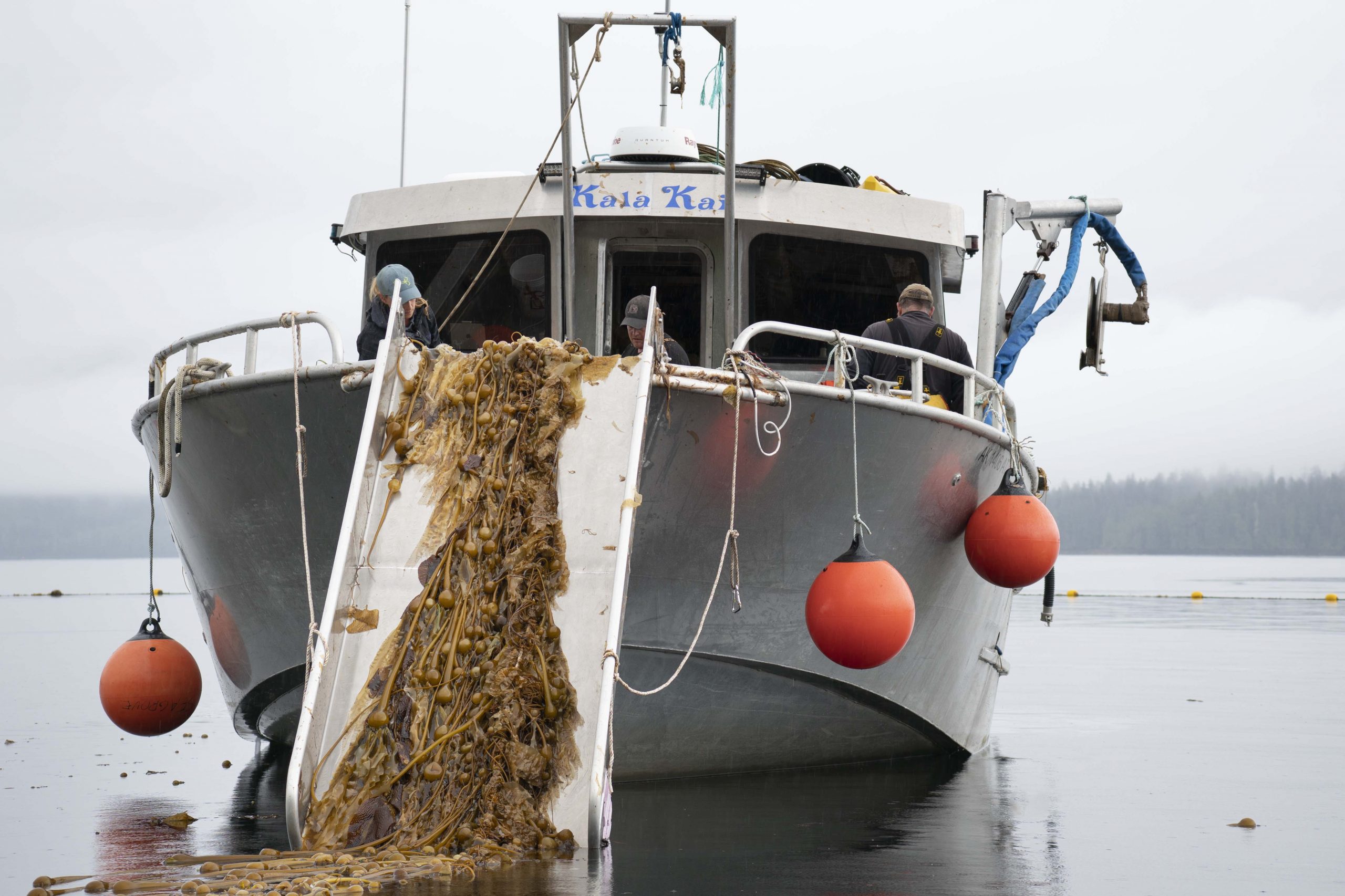
Do these two processes produce different tasting kelp?
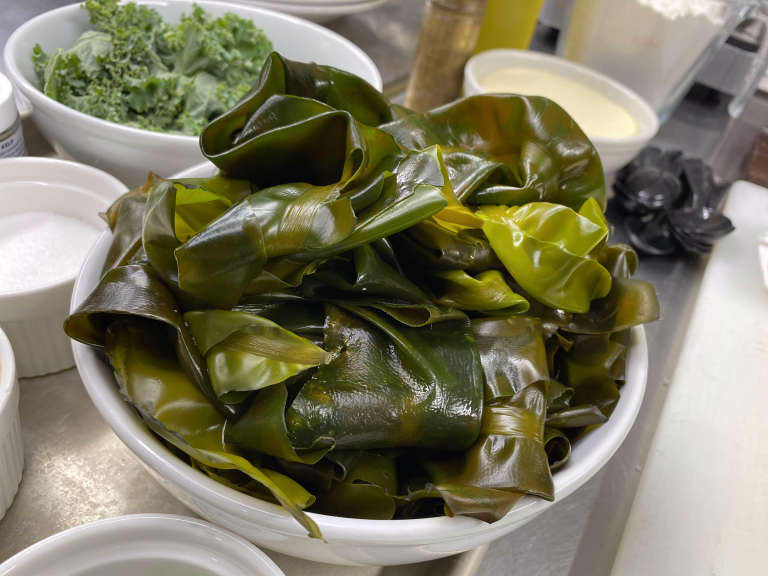
Mostly they do not. Variations are more likely due to the size of the kelp (wild-harvested is oftentimes larger than farmed simply because it has more grow time). There may also be slight deviations due to the different waterways the kelp is raised in; however, this would be true from farm to farm or wild bed to wild bed as well. Both wild kelp and farmed kelp are extremely high in iodine, fiber, protein, vitamins, and minerals – earning the title of a superfood.
Wild-harvested kelp is most oftentimes used in products that need to be made immediately after harvest such as kelp pickles. Farmed kelp is often used as a fresh to frozen ingredient in kitchens, in seasonings and sauces, and even in non-edible products such as fertilizer. In these cases, the kelp does not need to be used immediately and therefore has the time to make its way from the farm to the processing plant to your table.
So, why do companies who harvest wild kelp use farmed kelp at all?

It is necessary for food production companies to supplement their supply with farmed kelp for several reasons, but perhaps the most important is that there simply is not enough wild kelp to produce the goods. It would be tragic to decimate the wild kelp populations and using farmed kelp to supplement the wild is a sustainable, eco-friendly alternative to feeding the world.
Aside from the ecological reasons that relying solely on wild kelp doesn’t make sense, there’s also a handful of production reasons as well. For example, farmed kelp is uniform and it is on time. Farmed kelp has distinct seasons and harvesting schedules and oftentimes the bulk of the product is the same, eliminating any surprises along the production chain. Ordering from a kelp farm is reliable and consistent.
What does the future of wild-harvested and farmed kelp look like?
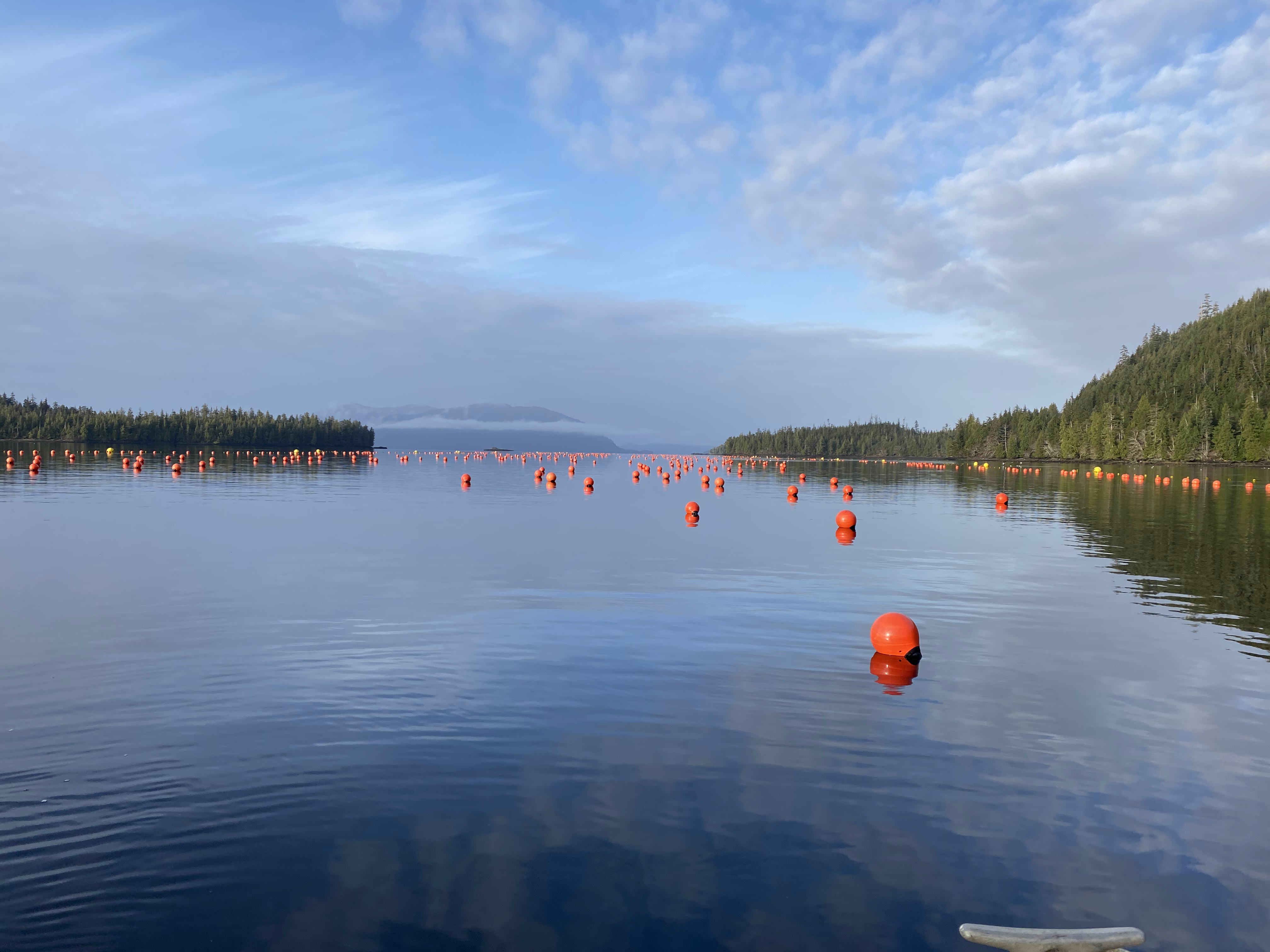
Harvesting wild kelp can be an amazing and sustainable food source for small communities along the coasts of Alaska and the world. It also presents the opportunity for wild kelp beds to be mapped and studied to help us understand and track any changes that may be happening within our waters. Alaskans have been harvesting wild kelp for as long as these coastlines have been inhabited and the more we bring awareness to the many health benefits of consuming kelp the more we can share in this bounty from the sea. When harvested on a small scale with diligent monitoring and record-keeping wild kelp beds can continue to flourish.
As awareness of the multitude of beneficial factors from kelp farming grows so will the kelp industry as a whole. The word “farming” can carry negative connotations in reference to seafood but kelp farming is a healthy and net positive product. Not only is farmed kelp just as healthy as wild kelp, but it positively impacts the environment that it is grown in as well.
Farmed kelp is the planet’s most sustainable, renewable, and environmentally friendly food source and it is an incredible tool in the fight against climate change. The carbon footprint of kelp farming is lower than any land-based food production and it requires no fertilizer, pesticides, freshwater, or land to grow. Kelp even produces oxygen and sequesters carbon!
The differences between wild-harvested kelp and farmed kelp pertain mainly to the way they are gathered. Both methods of harvesting are extremely important on our journey to understanding more about the sea and the positive impacts of growing and consuming kelp. A special thank you to Barnacle Foods for taking the time to talk to us about wild-harvested kelp – we encourage anyone with questions about the kelp industry to reach out. We aim to educate and spread the word of what kelp can do for your body and for the world around us.
Kelp: Healthier You. Healthier Earth.
